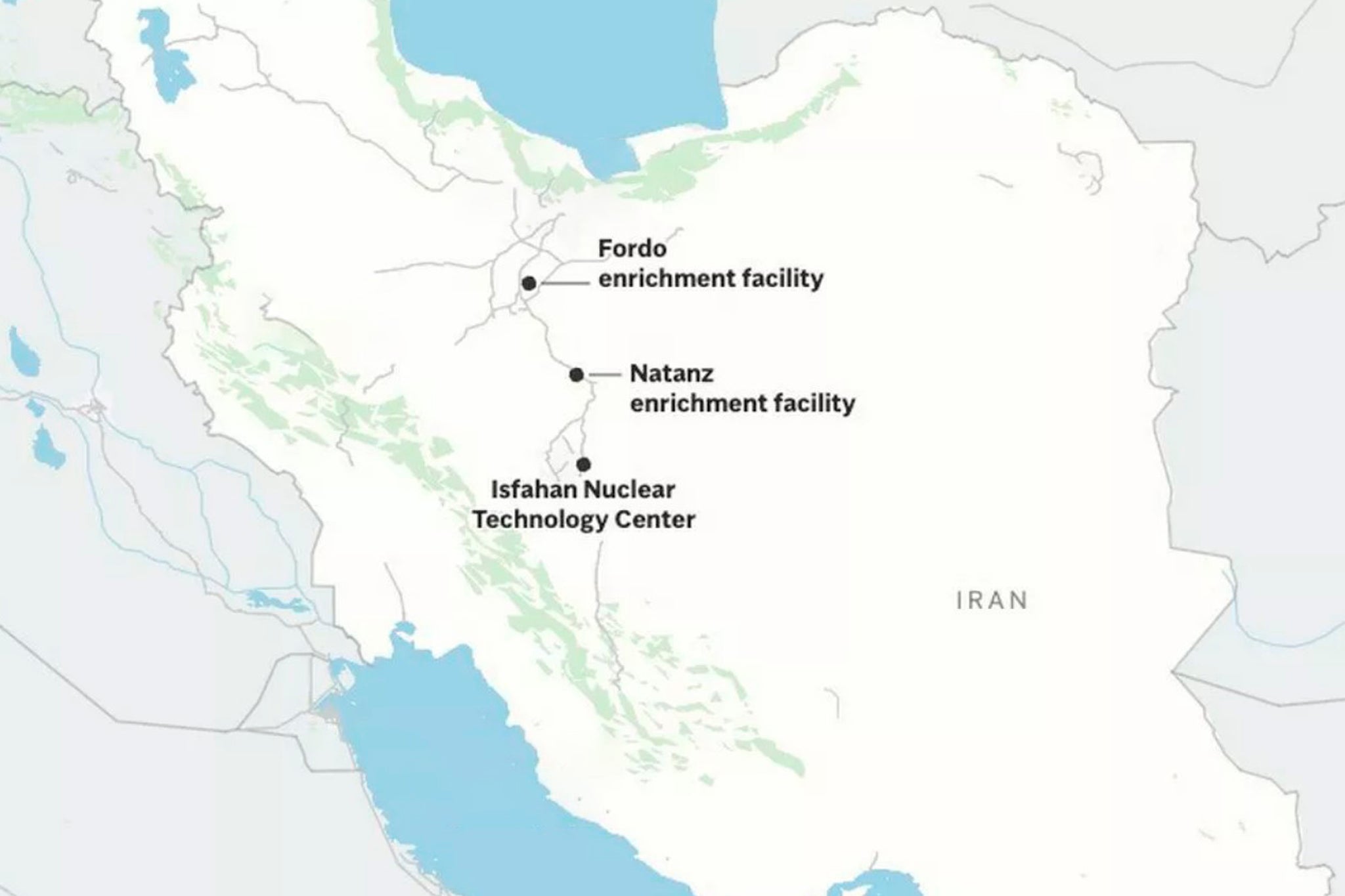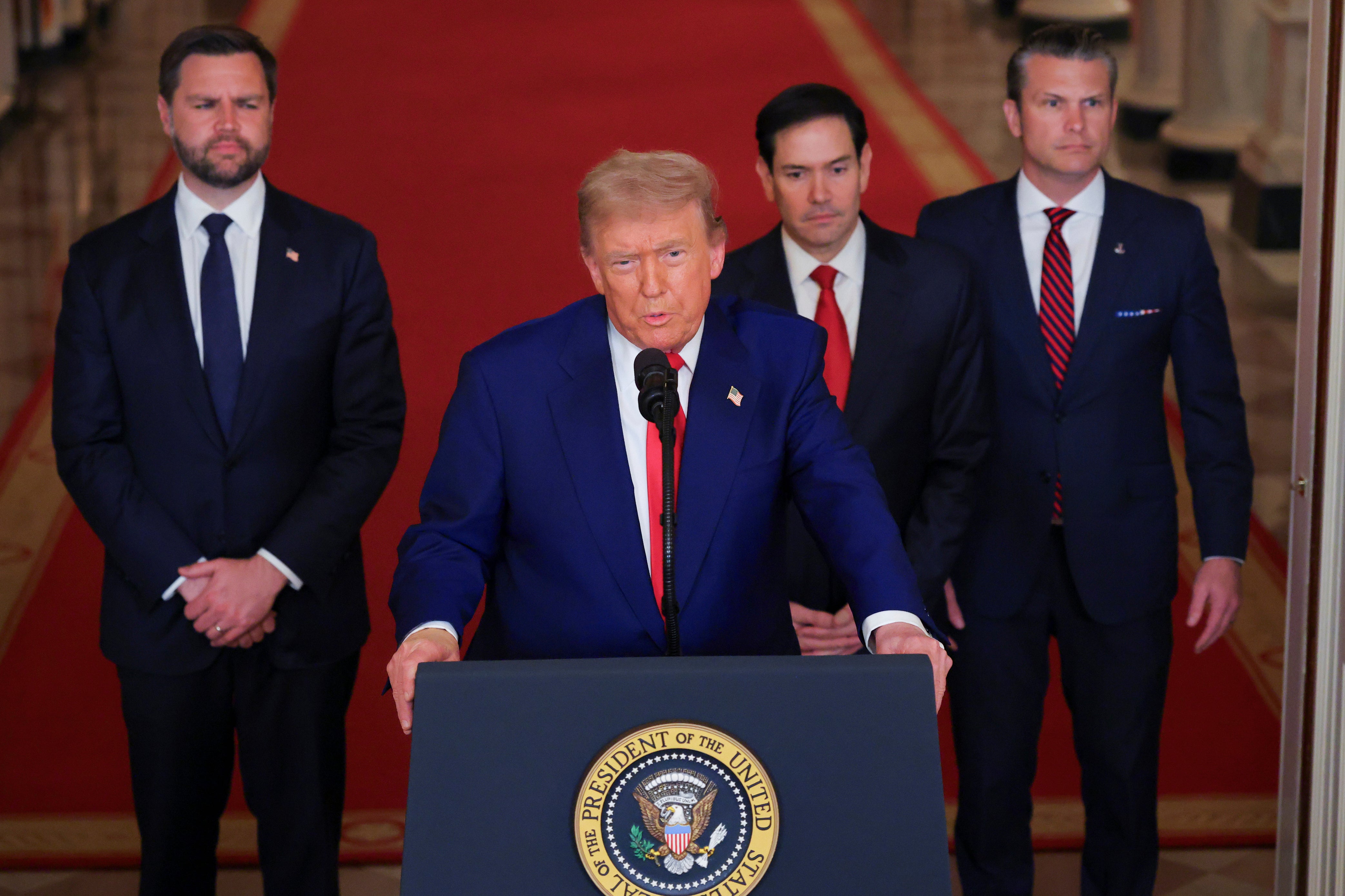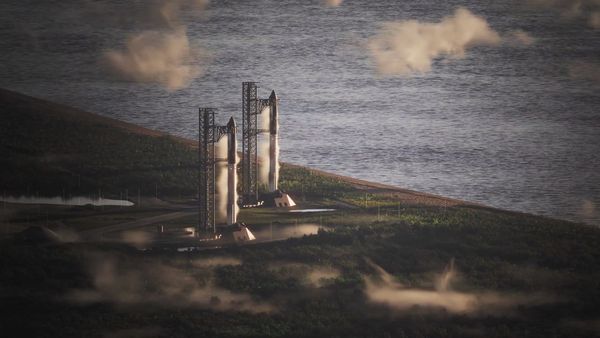In the wee hours of June 21, David Shayani took to his X account to reply to another user who saw flight-tracking information for a group of eight American tanker aircraft departing Whiteman Air Force Base in Missouri.
He wrote that he’d seen a total of nine B-2 Spirit bombers passing over his Warsaw, Missouri home, “headed due East.”
Shayani, who describes himself on the social media site as “an average guy” and a veteran of the U.S. Marine Corps, had inadvertently spotted what we now know was part of a grand deception by the Trump administration ahead of what the Pentagon revealed to be called “Operation Midnight Hammer.”

The blitz attack on a trio of Iranian nuclear facilities was described in limited detail by Defense Secretary Pete Hegseth Sunday morning, the former Fox News host and Donald Trump acolyte calling it “an incredible and overwhelming success.”
Appearing in the Pentagon briefing room for the first time alongside Joint Chiefs Chairman Gen. Dan “Razin’” Caine, the Defense Secretary said the operation had required “misdirection and the highest of operational security.”
That allowed seven of the stealth bombers spotted by Shayani, as well as an untold number of what Caine said had been “fourth and fifth-generation” fighters, to penetrate deep into Iranian airspace and drop a total of 14 Massive Ordnance Penetrator bombs — bunker-busting weapons designed to take out hardened facilities deep underground — in the first operational use of that weapon.
A multi-day deception
The Independent understands that the “misdirection” revealed by Caine actually began on Wednesday, when Trump decided that he would order use of the 30,000-pound weapons against Iran’s nuclear sites after meeting with his national security team.
That was also the day he began to ratchet up his rhetoric directed at the Iranian regime by demanding “UNCONDITIONAL SURRENDER” from Tehran in a Truth Social post, just minutes after he issued a thinly veiled threat against Ayatollah Ali Khamenei, the Iranian supreme leader.
One day earlier, Trump had told reporters aboard Air Force One that he was “not looking for a ceasefire” in Israel’s then days-old air campaign to take out much of Iran’s nuclear research and military capabilities and warned that Tehran was “very close” to a working nuclear weapon.
Privately, Israeli officials and some of Trump’s allies in Congress had been clamoring for the president to green-light the use of American resources to aid Israel’s campaign against Iran by employing the B-2 and the MOP against the hardened Fordow site.
Trump had agreed to do so, but on Thursday he appeared to revert to a familiar pattern by claiming he would make a decision on such strikes “within two weeks” because of what he called “a substantial chance of negotiation.”
A White House official said the president’s use of the “two weeks” timing was a deliberate choice because he’s often employed the same rhetorical device without any follow-through after previous 14-day deadlines for other matters.
5pm ET Saturday (June 21): B-2 stealth bombers join ‘support package’ of decoys
Caine, a four-star Air Force general who Trump called out of retirement and promoted to serve as the Joint Chiefs of Staff chair upon his return to the White House in January, noted that a number of the B-2 bombers seen in Missouri had taken off from Whiteman “at midnight Friday into Saturday morning.”
First revealed to the public in 1997, the iconic dark-skinned aircraft was designed in the latter years of the Cold War for nuclear strikes deep inside Soviet territory but has been repurposed into a conventional strike platform — in fact the only platform capable of carrying the MOP bomb.
Of those stealth bombers, Caine said “part of that package” — including two of the nine spotted by Shayani — were sent westward towards the Pacific region as a “decoy” and part of a “deception effort known only to an extremely small number of planners and key leaders” in Washington and at U.S. Central Command headquarters in Tampa, Florida.
According to the general, the remaining seven stealth bombers, what he called “the main strike package” manned by two crew members apiece, spent the next 18 hours proceeding “quietly to the east with minimal communications throughout” while refueling in-flight en route to the “target area” under the auspices of U.S. Central Command.
Once there, Caine said the bombers “linked up” with a fleet of escort fighters and support planes in what he described as a “complex, tightly timed maneuver requiring exact synchronization across multiple platforms in a narrow piece of airspace, all done with minimal communications.”
6 pm ET Saturday (June 21): Tomahawks take flight as planes enter Iranian airspace
About an hour later on Saturday, those planes were on the cusp of entering Iranian airspace.
That’s when a U.S. submarine — which Caine suggested was one of the U.S. Navy’s four Ohio class guided missile submarines — launched “more than two dozen” Tomahawk Land Attack Missiles aimed at “key surface infrastructure targets at Isfahan,” one of the three nuclear program locations targeted in the attack.
Then, the U.S. planes — including decoy aircraft in the form of “fourth and fifth generation” fighter jets — flew “at high altitude and high speed” in front of the B-2 bombers to draw out any Iranian Air Force fighters or ground-based air defense missiles.
.jpeg)
The Air Force general said the “strike package” continued with support from a number of U.S. combat commands and services, including U.S. Strategic Command, U.S. Cyber Command, U.S. Space Command, the U.S. Space Force, and U.S. European Command as the “protection package” fighters used what he called “high speed suppression weapons” in “preemptive suppressing fires against any potential Iranian Surface to Air threats” to ensure that the bombers could proceed unmolested.
It appears that goal was achieved, as Caine told reporters that the U.S. was “currently unaware” of any shots fired at the bombers on their way to their target sites.
6:40-7 pm ET Saturday (June 21): Trump’s bombs hit their targets
The first bombs, a pair of the 30,000 pound MOP bunker-busters, were dropped by the lead B-2 bomber at approximately 6:40 pm Eastern Time, targeted at one of “several aim points” on the Fordow facility, which had been constructed deep in a mountain near the Iranian city of Qom.
Caine said the remaining six bombers dropped 12 more of the massive weapons against their respective targets at Fordow and the Natanz site, with the last bombs hitting home around 7:05 pm ET and the Tomahawk missiles, which had been fired just before the bombers began their run into Iranian airspace, hitting their targets shortly thereafter.

All told, the Joint Chiefs chairman said the mission appears to have inflicted “extremely severe damage and destruction” on all three target sites.
He credited “more than 125” American aircraft with participating in the airstrikes, including the B-2 bombers, as well as as “multiple flights of fourth and fifth generation fighters, dozens and dozens of air refueling tankers, a guided missile submarine, and a full array of intelligence surveillance and reconnaissance aircraft” supported by “hundreds of maintenance and operational professionals” around the world.
7:30 pm ET Saturday (June 21): Bombers exit Iran, heading to refueling stations
Caine said that as far as the Pentagon was aware, none of the U.S. aircraft involved in the strikes were subjected to any incoming fire on their way out of Iranian airspace, and it appeared the B-2 bombers had gone undetected by Iran’s home-built and Russian-bought surface-to-air missile systems.
Both Hegseth and Caine also noted that the B-2 strikes, which required a 30-hour round trip between Missouri and Iran, was the second-longest combat mission ever flown by the aircraft.
After the bombers and their escorts exited Iranian airspace , Trump returned to Truth Social to reveal the strikes to the world in a post stating that “our very successful attack” on Fordow, Natanz and Esfahan was then complete.
In televised remarks a short time later, he warned that more of the same could be on the table if Tehran does not return to negotiations.
Speaking from the White House while flanked by Vice President JD Vance, Hegseth and Marco Rubio, the ex-Florida senator who serves as his national security adviser as well as Secretary of State, the president described the airstrikes as “a spectacular military success” and said the three facilities targeted by U.S. warplanes had been “completely and totally obliterated.”

“Iran, the bully of the Middle East, must now make peace. If they do not, future attacks will be far greater and a lot easier,” Trump said.
He also warned Tehran that their aggression in the region and their nuclear ambitions “cannot continue” and cautioned Iranian leaders not to retaliate.
“There will be either peace or there will be tragedy for Iran, far greater than we have witnessed over the last eight days. Remember, there are many targets left. Tonight's was the most difficult of them all, by far, and perhaps the most lethal. But if peace does not come quickly, we will go after those other targets with precision, speed and skill, most of them can be taken out in a matter of minutes,” he said.
8 am ET Sunday (June 22): With B-2s return to Missouri, Hegseth and Cain brief press
Early Sunday morning, Caine and Hegseth outlined the historic attack, with Hegseth calling it “an incredible and overwhelming success.”
"We devastated the Iranian nuclear program,” the Defense Secretary said. “Thanks to President Trump's bold and visionary leadership and his commitment to peace through strength, Iran's nuclear ambitions have been obliterated."
Pentagon says US doesn't want to pursue war with Iran after bombing 3 of its nuclear sites
Where are the US military bases in the Middle East as Iran threatens retaliation?
Prada wants to change the conversation away from aggression, toward gentleness
JD Vance warns Iran retaliation to US strike would be ‘catastrophic mistake’
‘How to Train Your Dragon’ tops the US box office as ‘Elio’ marks a new low for Pixar







